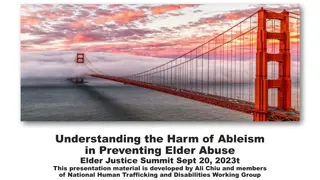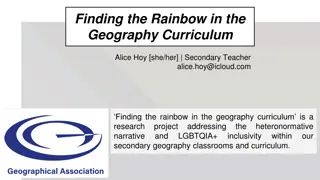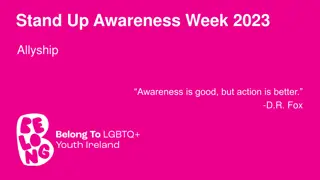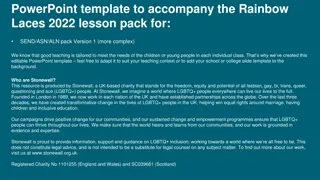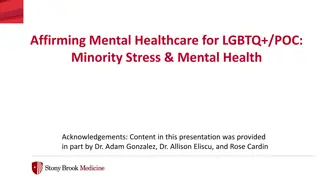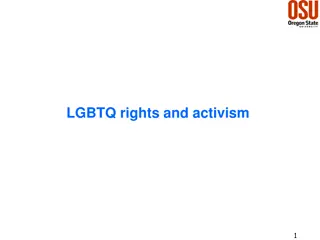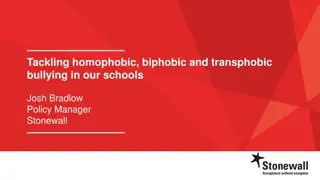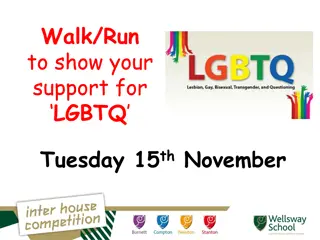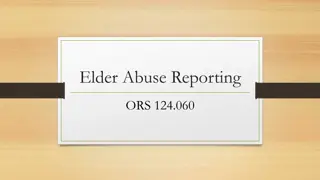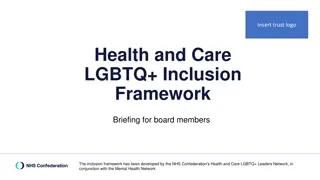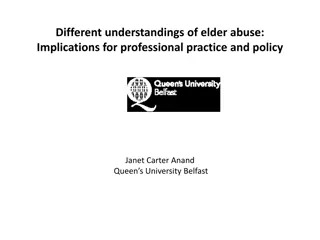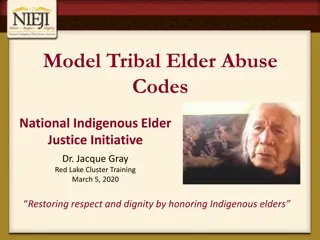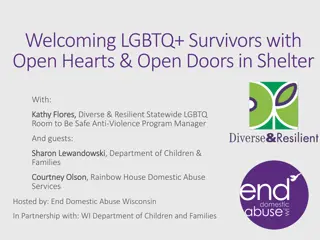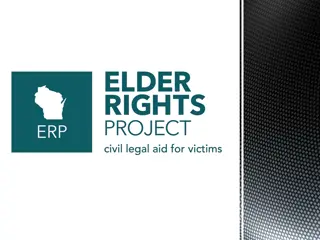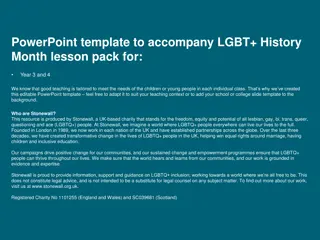
Support for Elder LGBTQ+ Survivors
Discover insights on working with elder LGBTQ+ survivors, including types of relationships, barriers to care, resources, and statistics. Learn about gender terminology, indigenous care strategies, and promoting inclusivity.
Download Presentation

Please find below an Image/Link to download the presentation.
The content on the website is provided AS IS for your information and personal use only. It may not be sold, licensed, or shared on other websites without obtaining consent from the author. If you encounter any issues during the download, it is possible that the publisher has removed the file from their server.
You are allowed to download the files provided on this website for personal or commercial use, subject to the condition that they are used lawfully. All files are the property of their respective owners.
The content on the website is provided AS IS for your information and personal use only. It may not be sold, licensed, or shared on other websites without obtaining consent from the author.
E N D
Presentation Transcript
Working with Elder LGBTQ+ Survivors By: Elizabeth Gallagher LGBTQ+ advocate at the Women s Resource Center Women s Resource Center WORKING WITH OUR COMMUNITY TO END DOMESTIC VIOLENCE
Agenda General Info Language/ Definitions Types of LGBTQ+ relationships Barriers to care How to help Resources and further learning
22.1% of LGBT adults over age 60 reported they had been harmed by a caregiver Nearly one-third of LGBT older adults ages 65 and older live at or below 200% of the federal poverty level, compared to a quarter of non- LGBT older adults 25.7% reported knowing someone who had been mistreated 47% of bisexual older men and 48% of bisexual women live at or below 200% of the federal poverty level. 60% had experienced psychological abuse. One in Five LGBT Older Adults is a Person of Color 48% of transgender older adults live at or below the federal poverty level. By 2050, 40% of LGBT older adults will be people of color
Terms Gender Binary/ Non binary Definition A system in which gender is constructed into two strict categories of male or female. Someone who is non-binary identifies outside of this spectrum Language Gender Dysphoria Clinically significant distress caused when a person s assigned birth gender is not the same as the one with which they identify Outing Exposing someone s identity to others without their permission Terms describing the gender one was prescribed at birth Sex assigned at birth- amab/afab Woman loving woman or man loving man Wlw/ mlm A term people often use to express a spectrum of identities and orientations that are counter to the mainstream. This term was previously used as a slur, but has been reclaimed by many parts of the LGBTQ+ movement. Queer Pronouns outside of our common vernacular. EX: xe/xir/xirs, ze/zir/zirs and fae/faer/faers Neopronouns Someone who experiences little to no romantic or sexual attraction Aromantic/ Asexual/ Demi Someone who is attracted to people regardless of gender Pansexual Intersex Intersex people are born with a variety of differences in their sex traits and reproductive anatomy. The action of incorrectly gendering someone can include using incorrect pronouns, name, and other gendered language Misgender Gender affirming care Healthcare that may help affirm someone s gender When someone can hold sexual or romantic feeling for multiple people at once Polyamorous
Types of Relationships Queer relationships Queer Platonic Relationships Squish, Zucchini Familial abuse Caregiver abuse
Barriers to Receiving Care Fear of discrimination Fear of police Added intersectionalities Lack of LGBTQ+-specific/ competent programs Lack of trust in the legal system Untrained employees Fear of being outed Societal stigma Fear of leaving/ inability to find someone else Non-inclusive shelters/nowhere to go Lack of support Financial issues
Ways to Help Don t assume Share pronouns/ mirror language Stay educated Ask appropriate questions Treat them as you would anyone else If you mess up apologize and move on Speak up if you see something Connect with local LGBTQ+ orgs
Ways to Help Cont. Advertise and or create LGBTQ+-specific programs Hire LGBTQ+ staff Update forms to be more inclusive Respect non-legal name changes Make sure staff are trained in cultural competence Advocate for legislative changes
Resources and Further Learning Los Angeles LGBT Center Queerri.com Loveisrespect.org SAGE National Center on Edler Abuse The Trevor Project Women s Resource Center Hotline 401-846-5263


